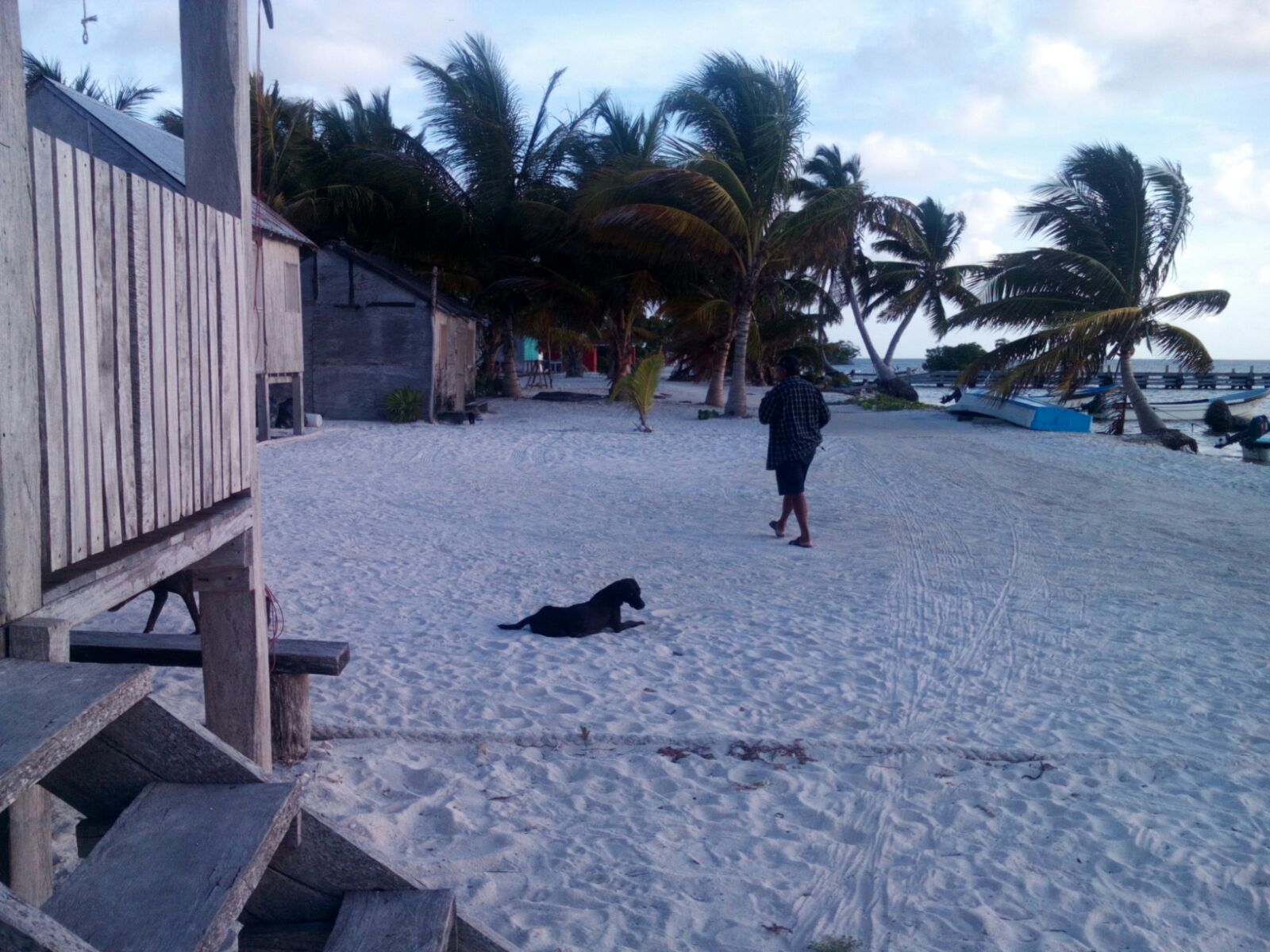PUNTA HERRERO
Quintana Roo, México
Punta Herrero is a small coastal fishing community in Quintana Roo, México. It is located in southern Espíritu Santo Bay, within Sian Ka´an Biosphere Reserve. It takes four hours by car to travel from the State´s capital city, Chetumal, to Punta Herrero. This community faces the Carribean Sea and the Mesoamerican Barrier Reef, the second largest in the world. Between the barrier reef and the coastline, there is a reef lagoon, with white fine-grained sand and seagrass beds. Landward, coastal dunes, wetlands and mangroves surround Punta Herrero, followed by low and medium dry deciduous forest. Most community inhabitants are fishermen, born in Chetumal. More than three quarters of population are 40 years and older. Children are practically absent since they attend school in the capital city. The main economic activity is small-scale traditional fishing, focusing on lobster (Panulirus argus) and fishes (lutjanidae, sparidae and serranidae). To catch lobster, artificial refuges are used; organisms are caught by hand during free style diving. Lobster season runs from July to February. Fishes are caught by traps from May to December. The community´s inhabitants are highly motivated to protect their natural resources.
Top environmental challenge faced by the community (currently or in the past 10 years):
Punta Herrero inhabitants had exploited natural resources depending upon its availability and market demands. During the first half of the past century, coconut palm exploitation was the main economic activity, until 1955 when Hurricane Janet destroyed everything along the coast of Quintana Roo. Ever since, the community´s people turned to commercial fishing as the main source of protein and income and have been organized as a fishing cooperative. At the beginning, exploitation rate was low, however, with more fishing resource users entering the fishery, yields increased during the 1980´s and declined to alarming levels. Since the community is within a natural protected area boundary, no economic activity is allowed. Nature tourism is an attractive alternative due to its low impact on the environment and due to the fact that tourism is well supported by local and state governments. Transition from fishermen to tourism services providers is the main challenge inhabitants are facing these days, not only in technical issues (boats maneuvering and maintenance), but in financial, organizational and legal terms as well.
How the environmental challenge has affected local livelihoods:
The chief concern of the community´s people is the decline of both biological and economic yield. Despite the fact that fishermen are conscious of protecting marine resources (for instance, fishing effort has not increased in the last seven years), family income is decreasing at an alarming pace since fishes and lobster biomass are declining. To compensate, fishers have been helping the protected area staff to conduct surveillance patrolling along the reserve boundaries. But that is not enough; it is a sporadic job and the payment is low. Moreover, due to the fact that people do not know how to initiate and maintain a tourism enterprise, young people are leaving their households, families are disintegrating, neighbourhoods have been abandoned, and traditional ecological knowledge is at risk of disappearing because the new generation is no longer interested.
Community response to the challenge, through environmental stewardship (conservation) initiatives that improve environmental well-being and support sustainable livelihoods:
With the help of a natural resource management student whose family lives in Punta Herrero, and whose parents are members of the fishing cooperative operating in that area, we have started helping the community´s people to: a) consciously realize what their actual economic situation is, b) identify and prioritize main strengths, weaknesses, opportunities and threats, and c) propose economic alternatives to help marine resources conservation and to recover the social and households well-being. Since this process has recently started, we are not able to set a success level of any response. People want to change towards a more sustainable way of living; they are well aware of the benefits of such a change, but they do not know how to achieve it. Capacity building is highly needed on issues such as organizing, financing and operating a sustainable tourism cooperative, and adding value to their fishing objectives, like freezing them and distributing them to the market without depending on middlemen.
Extent to which governmental policy (at local, regional or national levels, as relevant) has supported, or been contrary to, the community's responses to the environmental challenge:
Support from local and state government is lacking. The only source of policy support comes from federal government, but it is restricted to financial aid and equipment spread that is not suitable for fisheries. Policies are designed in central offices, which are not compatible to local needs. There is no consultation process from government agencies to know marine resources users concerns and needs. Another management issue that is against conservation efforts is illegal fishing carried out by low-income people coming from landward communities who do not belong to any fishing organization; they are not forced by any authority to comply with fishing regulations. No official efforts are being conducted to stop illegal fishing.
Keywords: Ecosystem
Coastal, Marine
Keywords: Resources
Fish
Keywords: Big Issues
Biodiversity, Climate change, Resource use
Keywords: Solutions
Empowerment, Governance/Management, Local/Traditional knowledge
Contributed by: RICARDO TORRES LARA
The information provided and opinions expressed above are the responsibility of the contributor and do not necessarily reflect the views and analysis of the Community Conservation Research Network (CCRN), nor those of all members of the community described.
For any questions or comments on Communities in Action, please contact us
here.



